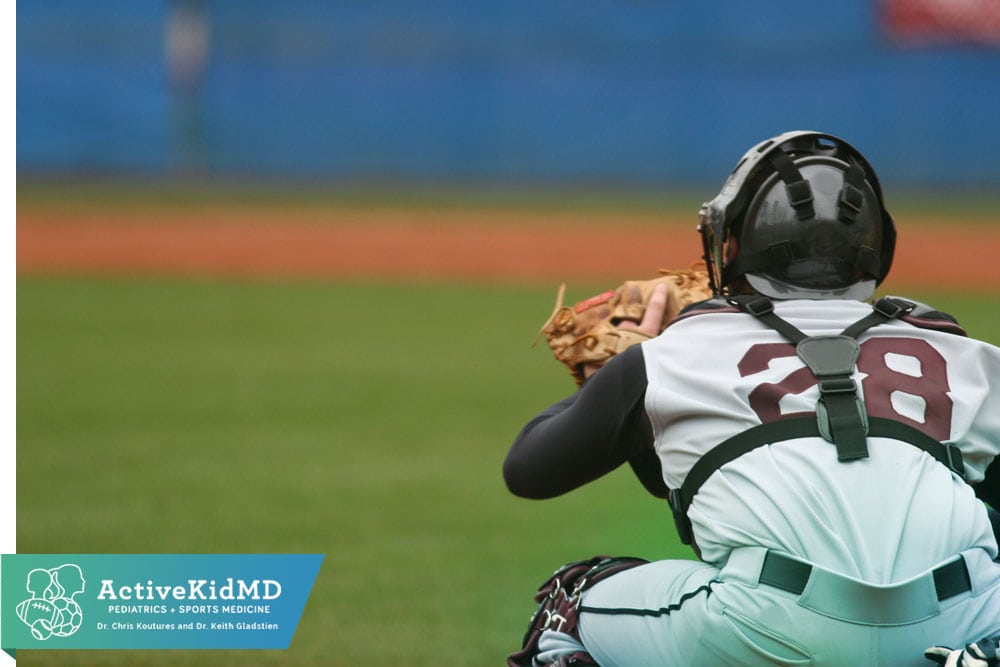Advice by Sport: Baseball
When Should A Pitcher Learn How To Throw A Curve? How Many Pitches Can A Pitcher Throw A Week? Why Does My Arm Always Hurt?
Let’s start with one statement: overhand throwing a baseball or softball is not the most natural action for the human. Underhanded softball pitching is slightly more forgiving on the shoulder, but can place unique stresses on the elbow or lower back.
A parent cannot let ego or immediate gratification get in the way of an immature arm- too much throwing at too young of an age may create significant damage.
Sure, making all-stars at age 11 with a wicked curve is a great feeling, but not being able to throw at age 16 due to permanent elbow damage is a real bummer.
Remember, elbow or shoulder injuries are a common career obstacle as many pro scouts or college coaches may shy away from the athlete with a history of arm problems.
While pitchers get the most attention, let/s not forget other high-volume throwing positions such as catcher and shortstop.
If I have a personal crusade, it is to save the arms of all the catchers.
There are not too many willing and talented catchers, so when one shows up, he/she gets a lot of playing time. When there is a pitching change, that catcher is still out there.
From warming up pitchers in the pen to gunning out runners at second base, I have seen many a young catcher develop arm troubles. Little League baseball has recognized the importance of protecting catchers by mandating that any player who throws more than 41 pitches in a game cannot move to catcher in the same game.
Now, Some Further Tips On Arm Hygiene:
1) Signs of fatigue and poor technique include:
- dropping the elbow (should be always at/above shoulder-level)
- opening up too soon (chest facing the plate before the elbow is ready to deliver the baseball) and
- getting pitches up in the strike zone or poor command/velocity.
2) Alternate high and low demand throwing positions- pitchers and catchers should move to less demanding positions on a regular basis to rest the arm.
3) Proper warm-up: short toss first (10-20 yards, 10-20 easy throws), progress to long-toss (35-40 yards, 10-15 easy throws) then finally to mound work
4) Per USA Baseball, no off-speed baseball pitches (curve, sliders, and breaking balls) until the arm is fully mature (age 13-14 in girls, 14-15 in boys)
5) Observe age-appropriate competitive pitch counts- pitch counts are a more appropriate arm-stress measure than innings pitched. Realize that these pitch counts are per week- not per team.
7) A player needs to train to be a pitcher- a recent study indicated that 8-12 year-old pitchers who throw between 300-600 pitches in a season have the lowest relative risk of elbow injuries. This suggests that a certain amount of throwing leads to arm conditioning and proper muscle use that actually can reduce injury, while too much throwing might lead to fatigue and overuse of these muscles. On the other hand, not throwing for at least 2 months during the year can give an appropriate rest period to reduce the risk of arm or shoulder overuse injuries.
Do not hesitate to recognize the symptoms of arm trouble and then get professional advice – many throwers are accustomed to certain soreness after games. If this soreness intensifies into actual pain or lasts longer than usual – call and schedule an evaluation. Any joint stiffness or swelling maybe OK in adults, but is unacceptable in young throwers. Poor results- loss of velocity or command can be other signs of evolving arm troubles.
What Other Safety Recommendations Do You Have For Baseball?
- Have younger children use breakaway bases- greatly reduce sliding injuries,
- No on-deck circle for younger children,
- All batters, runners, and even younger base coaches must wear a helmet
- Only one child swing a bat at a time with close adult supervision
- Catchers must wear full protective equipment- even in warm-ups
- Use reduced impact baseballs for younger players






